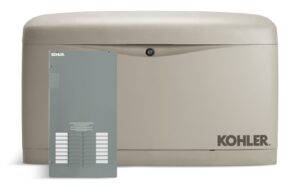When working in remote locations or where there is no power supply, large diesel generators are needed to get the job done. Generators provide temporary power for equipment, machinery, lighting, and more at the construction site or when electricity is otherwise unavailable.
Large generators can kick out 10,000 to 12,000 kW or more, enough to power an entire worksite. If you’re using one of these larger generators for any length of time, it’s important to keep them in good working order throughout the job. If the generator breaks down, it could bring the entire worksite to a standstill.
Diesel Generator Preventive Maintenance Checklist
When using a generator in the field for any length of time, it’s important to check the equipment often. A daily inspection of the generator before work begins is recommended to ensure you’ll have the power you need throughout the day. It’s best of your generator is placed on level ground.
Fuel Levels – It’s a good idea to check the fuel throughout the day so the generator won’t suddenly stop. Add fuel as needed.
Engine Oil Levels – Check to make sure the oil level is between the high and low-level marks. Add more if necessary or drain if there is too much oil. 15-40 weight oil is recommended because it can be used in both warm and cold environments.
Water Fuel Separator – This should be drained at least once a week. The separator removes water and other particles from the fuel to ensure your engine receives clean fuel.
Radiator Reservoir – Check the coolant levels. When low, add a 50-50 coolant water mix to bring back to appropriate levels.
Check belts – Replace belts that are at a failing point. Also, inspect the fan if possible and clean as needed.
Air/Fuel Filters – Although it’s recommended to inspect the air filter monthly, dusty conditions require more frequent maintenance. Regular checks of fuel filters to remove debris are also recommended.
Battery – Make sure the terminal connections are tight and free of corrosion, the white powder-like substance that can affect performance. Make sure to charge the battery fully or check the specific gravity of the unit.
Gauges – During operation, occasionally monitor gauges to see if the generator is running as it should. Oil pressure, water temperature, and other gauges should be clearly visible.
Service history – The dates of any and all major services should be clearly marked. Use these as a guide, along with the hour meter, to determine when these services are required.
Visual Inspection – If you notice leaks from the fuel tank or system, cooling system, or exhaust lines, corrosion, or hear noises during operation, stop the generator and make the necessary repairs. This may require a call to a professional generator service contractor.
Before renting or using a generator at your site, find out when the last service or generator maintenance was performed. If you own the generator, you’ll want to make sure to follow the manufacturer’s maintenance schedule to get the most out of your equipment.
Generator Installation
While you may need an industrial generator that’s portable during construction, your plant, facility, or commercial building may require a generator to provide backup power as part of the infrastructure. As a Kohler Installation and Service Dealer, Prairie Electric has generators for a wide variety of applications.
Backup power is critical even if power is lost for just a few hours. At home, ice cream may melt, but in other situations, lives could be put in danger or products may be destroyed. We’ve installed generators for food processing plants, healthcare facilities, data centers, business parks, and more.
If you would like to know more about how to maintain your generator, need service for your generator, or have a Kohler generator installed at your home or business, reach out to Prairie Electric. Our generator installation crew has decades of experience and will find the right unit for your needs.

